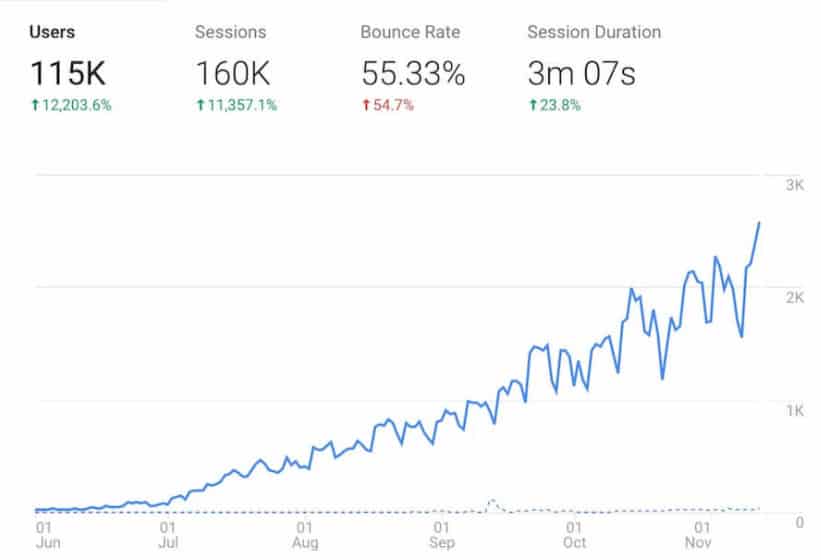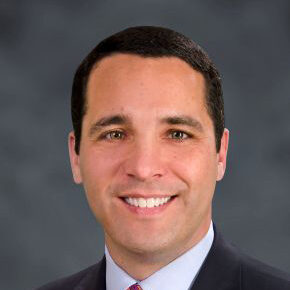
To many of you, this post will seem so unnecessary (probably like a lot of my posts). Unfortunately, way too many people still don't go deep enough in understanding traffic. You've probably seen the vague traffic charts floating around the web, followed by the obligatory hand claps and fire emoji. So, before your agency folks start the circle back-patting, remember that most traffic has little to no meaning for your business.
Spam
Spam in analytics data is probably a much bigger problem than you or your agency recognizes. While there are a variety of techniques for reducing spam, I'm not going to go too deep here. The reason, as I'll explain below, is that from a performance standpoint, we actually want to work backward from clients/customers and qualified leads to analyze traffic. Just know that your top-level traffic reports are complete trash.
Channels
The next traffic issue that still comes up is failing to analyze traffic by channel, source, medium, etc. Even if the traffic is real, its likelihood of having value, and more importantly, its profitability varies greatly from one channel to another. From a performance marketing standpoint, an obvious example is organic search traffic versus Facebook referral traffic. A click from a targeted local pack listing typically will have a much higher conversion rate than a click from Facebook generated by pics from your office holiday party. Intent matters a lot. At a minimum, if you pay someone to help you drive business from organic search, they should be reporting on organic search traffic (and really organic search tied to business metrics like clients, qualified leads, consultations, etc).
Location
If your business is a law firm that serves local clients, how likely is it that all that traffic from Russia will convert into a new client? Sure, I'm sure you can come up with plenty of exceptions. But go look at your historical client list. What percent is coming from outside the United States? Your region? Your state? Your county? Even your city? My guess is that for most of you, the answer is, not that much. If it is, then be intentional about adding those locations to your reports. But much more likely, your marketing teams are high-fiving for all that international traffic that will never become business.
"Brand"
Another issue that regularly comes up is the brand versus non-brand fight. I'm going to focus on it in the context of organic search traffic, but it also applies to paid search and really other channels too. The issue is that there's no segmentation between brand and non-brand. Let's say you are a well-established attorney with a strong reputation. People regularly refer other people to you. Regardless of how those referrals are made, most of those people are likely to search for information about you by name. We call those searches "organic brand traffic." Of course, your agency wants to take credit for that too. So, they bucket "organic traffic" without segmenting brand versus non-brand. So, as you toil away building that great reputation, your agency says, "see we're growing your organic traffic," we rock! But they didn't do anything to get folks to search your name. In the very least, you should understand directionally how brand and non-brand traffic are trending. Ideally, you're doing some modeling to connect clients and consultations back to brand searches versus non-brand searches.
Conversions
Most traffic is only as valuable as the business it generates. From a performance marketing standpoint, we're in the world of direct response and conversions. Sure, there are other valid marketing objectives, but let's face it, you're probably focused on qualified leads, potential clients, consultations, and clients tied directly back to marketing/advertising time and money. That means that the most valuable traffic is that which converts.
This takes us back to those vague traffic charts and fire emoji. It is exceptionally rare that anyone shares the "converted organic search traffic versus target converted organic search traffic chart." Why? Because they're not as exciting. They don't tend to skyrocket up and to the right. Most folks don't even have a target and those that do aren't regularly hitting it.
Don't fall victim to the "traffic is up" trap! Hold marketing agencies and internal marketing teams accountable for delivering meaningful dashboards and insights that connect traffic to business metrics.

Here's a recent Google SERP for "𝘄𝗵𝗼 𝗮𝗿𝗲 𝘁𝗵𝗲 𝗯𝗲𝘀𝘁 𝗰𝗮𝗿 𝗮𝗰𝗰𝗶𝗱𝗲𝗻𝘁 𝗹𝗮𝘄𝘆𝗲𝗿𝘀 𝗶𝗻 𝗽𝗵𝗶𝗹𝗮𝗱𝗲𝗹𝗽𝗵𝗶𝗮." Ads? ❌LSAs? ❌Local Pack? ❌Links? ❌ 🔷 AI Overview? ✅ 6 firms listed. Only one tiny 🔗. Click the 𝗦𝗵𝗼𝘄 𝗺𝗼𝗿𝗲 button? 𝗬𝗼𝘂 𝗴𝗲𝘁: Here's a more detailed look at some of these firms: THE PEARCE LAW FIRM, P.C.Edith Pearce, […]
On April 22, 2025, Google sent an email updating Local Services Ads Additional Terms for Providers: Subject: Action required: important updates to Local Service Ads Additional Terms Many people are arguing that lawyers cannot participate in Local Services Ads, as this would constitute a per se violation of the Rules of Professional Conduct related to […]
Conrad and I recently joined Zack at Lawyerist to record a conversation about AI and marketing. You might think that we spend the whole time on how lawyers can use AI to publish content. You'd be wrong. While AI can certainly support publishing, there are many more interesting ways to use it in legal marketing. […]
As more legal services consumers turn to ChatGPT for local law firm recommendations, a fascinating intersection between AI, search, and maps unfolds. While Google remains the undisputed leader in local business data, ChatGPT is increasingly becoming an entry point for searchers seeking legal representation. But here’s the kicker: instead of keeping users within its ecosystem, […]
When law firms contact us, they usually want to talk: • PPC Ads • SEO Rankings • Lead Generation Very few want to talk: • Brand • Trust & Recognition • Emotional Connection Admittedly, much of this concerns that AttorneySync is known for lead generation across those common digital channels. But even when we start […]
According to an October 2024 study by SE Ranking: "The legal niche triggers the highest percentage of AIOs (77.67%). The average number of links matched between the AI Overview resources and the top 20 search results was 6.49 for legal topics. AI Overviews for legal topics most frequently link to NYCourts.gov (114 links), YouTube.com (48 […]
I'm grateful for my friend, Charley Mann of Law firm Alchemy. If you're a lawyer, subscribe to his Free Email List. In a recent email, Charley calls out bad guru advice on hiring: "Trying to execute a major SEO improvement? You need to find people who will help you, instead of trying to DIY it […]
If you’ve spent any time on LinkedIn, you’ve likely seen posts from law firm SEO experts showing off charts with an “up and to the right” trajectory. These screenshots, often pulled from tools like Semrush or Ahrefs, are meant to signal SEO success. And it’s not just the agencies celebrating—𝗹𝗮𝘄 𝗳𝗶𝗿𝗺𝘀 𝘁𝗵𝗮𝘁 𝗵𝗮𝘃𝗲 𝗵𝗶𝗿𝗲𝗱 𝘁𝗵𝗲𝗺 […]
Meh, links! All things being equal, links still tend to move the dial more than any other factor in legal SERPs. Maybe links are having a diminishing impact internet-wide. But in my experience, quality links, especially relevant links (both topically and geographically), tend to improve law firm visibility in search more than most everything else. […]